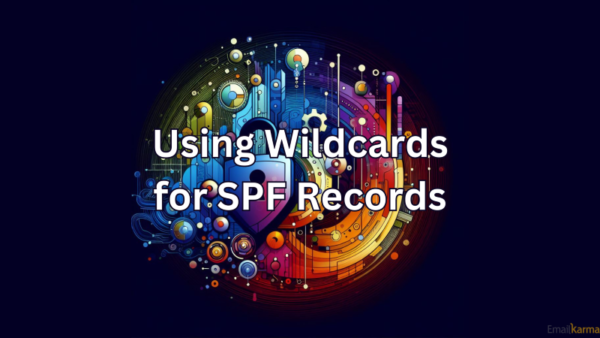If you’re involved in email management, you’re likely aware of the crucial role that Sender Policy Framework (SPF) plays in safeguarding against unauthorized email senders. However, like any tool, SPF requires careful configuration to be truly effective. While wildcard entries may initially seem like a convenient solution, they can introduce unexpected vulnerabilities.
As a quick reminder, SPF is an email authentication protocol enabling domain owners to specify which IP addresses are authorized to send emails on their behalf. By publishing SPF records in Domain Name System (DNS), domain owners help email servers verify the legitimacy of incoming messages. A wildcard entry in SPF records acts as a placeholder, permitting any subdomain of a specified domain to send emails. This wildcard, denoted by an asterisk (*), simplifies SPF record management by encompassing all potential subdomains.
Despite their apparent convenience, wildcard entries can inadvertently create security loopholes. Some potential pitfalls include:
- Non-existent Domain Spoofing: Wildcards may legitimize non-existent domains, making it easier for malicious actors to spoof email addresses.
- Ambiguity in Domain Existence: Wildcards can introduce ambiguity, especially in domains requiring proof of the sending domain’s existence. This ambiguity may lead email servers to accept emails from non-existent subdomains.
- Lack of Granular Control: Wildcards sacrifice granular control over SPF authorization, broadening the scope of authorized senders and potentially including unintended sources.
It’s crucial to consider these risks carefully, as indiscriminate wildcard authorization can compromise email security. Todd Herr, Technical Director, Standards and Ecosystem at Valimail, emphasizes this point: “Wildcards are bad if they cause non-existent names to exist when they shouldn’t.” While wildcards might offer convenience, they can lead to unintended consequences.
Additionally, it’s worth noting that authentication solutions may have planned for unexpected records, potentially minimizing the impact of wildcard entries. However, relying solely on such solutions can be unpredictable, as they may not consistently interpret unexpected records.
The Messaging, Malware, and Mobile Anti-Abuse Working Group (M3AAWG) advises caution when using wildcard entries in SPF records, they should be limited to domains that never engage in email communication. According to M3AAWG guidelines, such domains should employ a specific SPF configuration known as a “naked” -all record, indicating that no IP address is authorized to send email for the domain. While wildcard entries may simplify SPF record management, they should be reserved for cases where domains are not actively engaged in email communication. Adopting a more targeted and selective approach to SPF configuration can ultimately lead to stronger email security defenses. Remember, when it comes to safeguarding against email threats, less can indeed be more.
Interested in more information on SPF like the debate on -all vs ~all check out Al’s thoughts on SpamResource.


